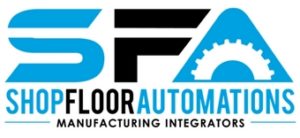Contact Shop Floor Automations
Contact Shop Floor Automations in order to receive the highest possible level of service and support, via the largest support staff in more locations in the automation industry. With support coverage in the Eastern, Central, Mountain, and Pacific Time zones, SFA technicians are available more hours than any other automation supplier or MFG integrator.
SFA also offers 24/7 support via our exclusive web-based callback system. No other system integrator includes this level of service at no additional charge. We will respond within 2 hours of receiving your message through our system (must be on active maintenance contract).
Looking for a specific product or solution on our site and can’t seem to find it? Contact us today!
Shop Floor Automations
5360 Jackson Drive
Suite 202
La Mesa, CA 91942
Direct # (619) 461-4000
Toll-Free # (877) 611-5825 (USA Only)
Fax # (619) 461-5918
Website www.ShopFloorAutomations.com
General Email info@shopfloorautomations.com
Our business hours are Monday through Friday, 7 a.m. to 4 p.m. Pacific Time, Monday-Friday
24-hour support is available via web-call back form for customers on an active contract.
Serving you since 1998

